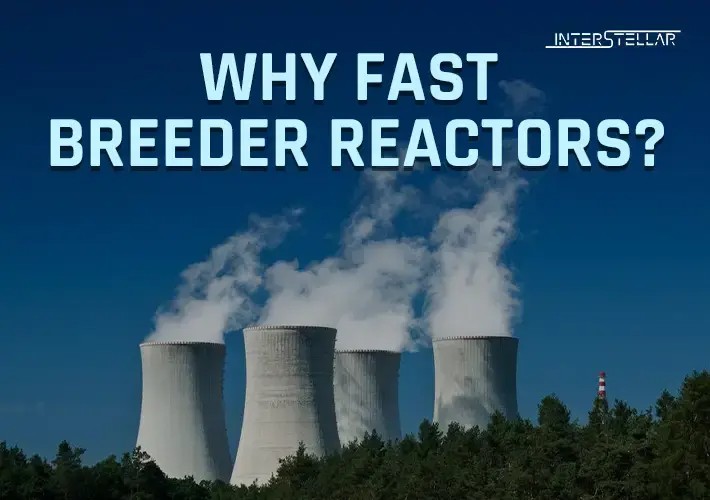Russia’s recent offer to help India in the thermonuclear domain underscores the global effort underway to develop fusion energy technology, says Dr Anil Kakodkar, former chairman of the Atomic Energy Commission. Speaking exclusively to Interstellar, he said India too has been researching fusion reactors for some time at the Institute for Plasma Research in Gandhinagar where two small tokamaks (machines for controlling nuclear fusion) are functioning.
Research in such areas, he said, is collaborative, but fusion energy is still certainly well beyond the “net zero target” of climate science, which is an immediate existential crisis. So addressing that existential crisis has to be on the basis of fission nuclear energy. And that’s why there is effort both with regard to thermal reactors and the breeder reactors.
India already has a 40 megawatt fast breeder test reactor operating, and a lot of experiments have been done using carbide fuel and mixed oxide fuel. And so that’s a platform for development of technologies. The Indira Gandhi Center also worked on the design of a 500 MW prototype which has been built by BHAVINI, a government enterprise under the Atomic Energy Commission.
The prime minister was there for the fuel loading, which will go on for some months followed by the first criticality and several experiments to understand the reactor characteristics and ensure these conform to the design. Thereafter it will start generating power.
“Incidentally”, Dr Kakodkar pointed out, “India is only the second country in the world that operates a 500 megawatt Prototype Fast Breeder. Russia has had a 600 megawatt and an 800 megawatt fast breeder reactor in operation for quite some years.”
Thermal reactors are a net consumer of fissile material, although they also convert some of the fertile materials into fissile material. But on a net basis, it’s a consumer of fissile material. The fast breeder on the other hand produces more fissile material than it consumes. And that is important for us because we need to go to thorium, which by itself is fertile but can turn fissile only when irradiated in nuclear reactors.
Breeder reactors multiply fissile material and when the capacity becomes sizable, use that platform or those platforms to convert thorium to uranium 233 and move to the third stage, which is the ultimate aim to use thorium at a scale and at a level which would address the energy needs of developed India. And so in the third stage, you can set up reactors which are essentially thorium.
It’s a difficult technology but very important for us as we have to decarbonize our energy system, Dr Kakodkar said. “Today, it is largely based on fossil energy. Tomorrow it has to be largely based on nuclear energy and in the Indian context, that is just not possible without taking recourse to thorium because we have one of the largest reserves of thorium in the world.”
We are also moving towards metallic fuel from mixed oxide fuel and that is the technology under development. Then we look to develop the technologies for thorium reactors, which could be a molten salt reactor, for example. This is a massive technological challenge.
“But I submit and argue this is the only way to go forward. And I think in India, we have the scientific capability and the industrial capability. Today we are largely integrated into the international nuclear commerce. But we need to scale up substantially and become commercially robust. It involves investing in making sure that industries are continuously busy. You can’t ask the industry to make a component for one reactor, then to wait for two years. Then you say make a component for another reactor. Industry cannot have its resources sit idle. Luckily, the government wants thermal reactors built in fleet mode,” he said.
That’s a step in the right direction. There is also a question of financing. We don’t give many concessions to renewable energy. Why not? Nuclear energy has, in fact, a footprint comparable with renewable energy and in some cases it’s even lower.
We can issue Green Bonds, which is the case in renewable energy. Why can’t we create market demand? While implementation has been a challenge and we need to improve, surely we need to improve, but it’s not as if that is the only thing which is delaying the building of new reactors.
The scale which we need to expand nuclear energy is so large that it cannot be done only on the basis of one nuclear power corporation. We need to have several public sector units which are also reasonably cash rich. We should have 18 organizations building nuclear power capacity and that is the way to go because technology for it is proven, it’s robust. It has been accepted and recognized as globally best in many ways. I would like to see not just two reactors in construction, which is the case now, but say six reactors of 1000 MW each.
In India, you can build reactors at half the cost or maybe even cheaper. Foreign suppliers who want to bring their reactors here also bring their price structure, which makes the project unaffordable. They need to do value addition in India to bring the cost down. And unless the domestic value addition is near 100%, I think imported systems will not move forward, he said.





